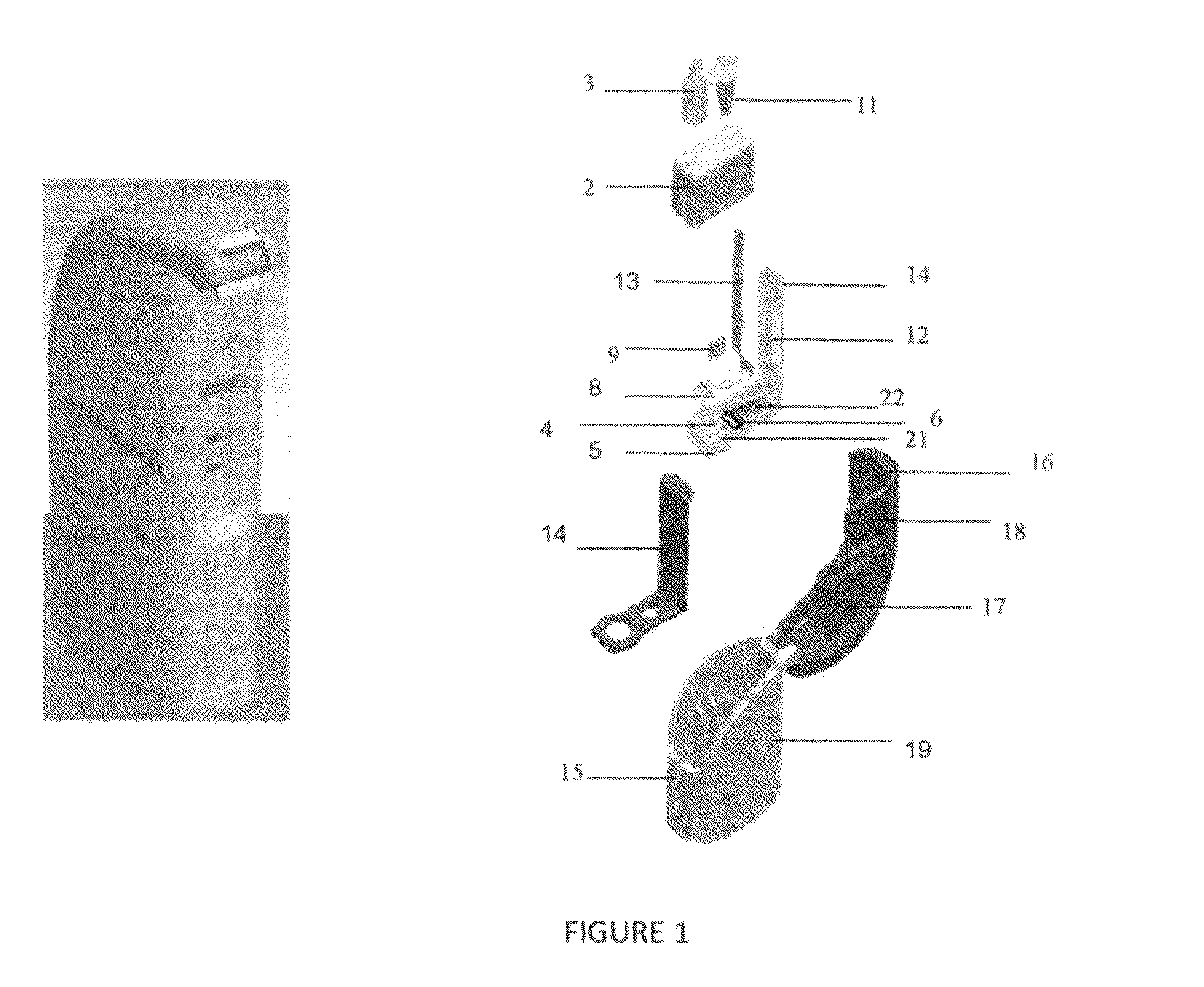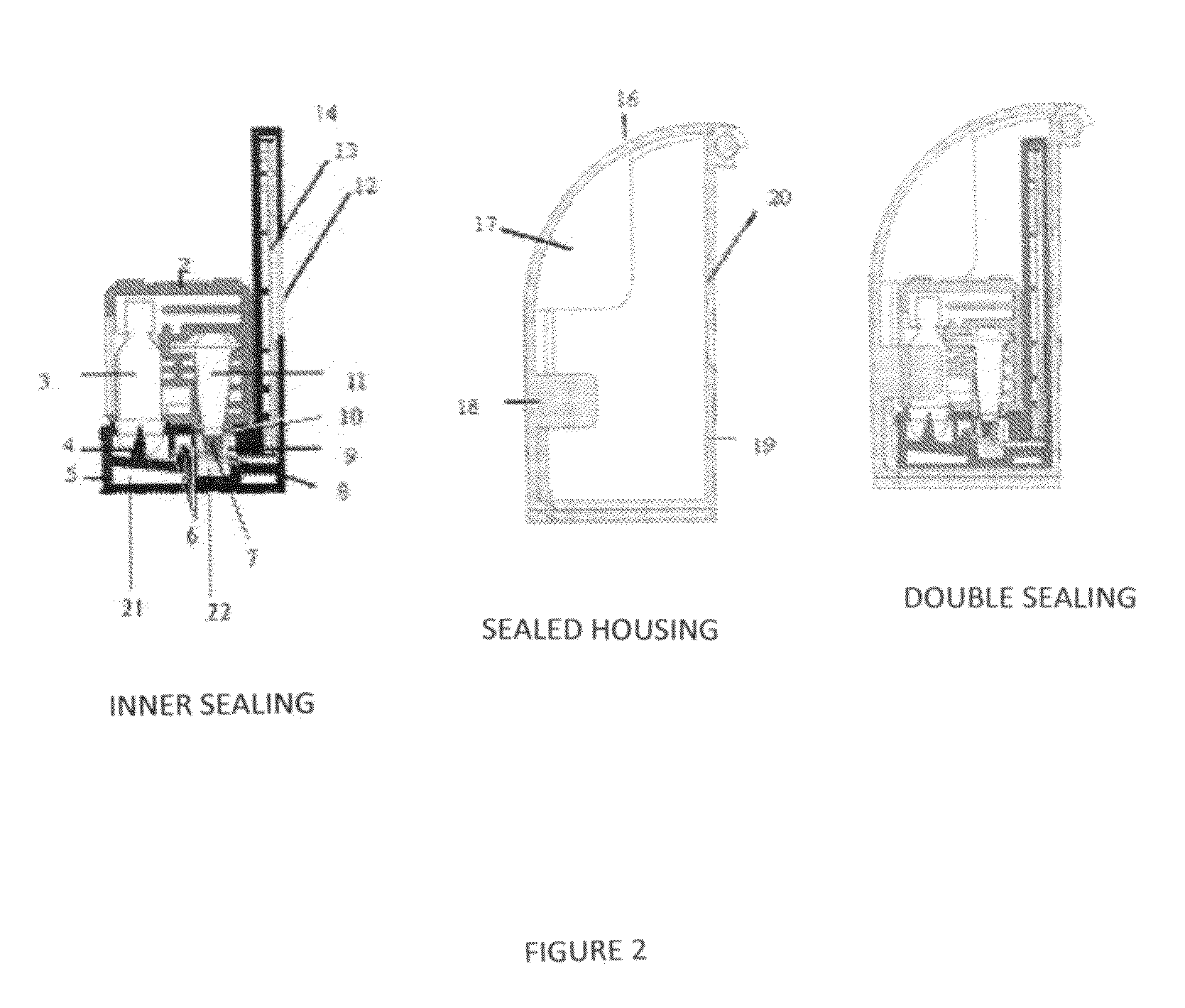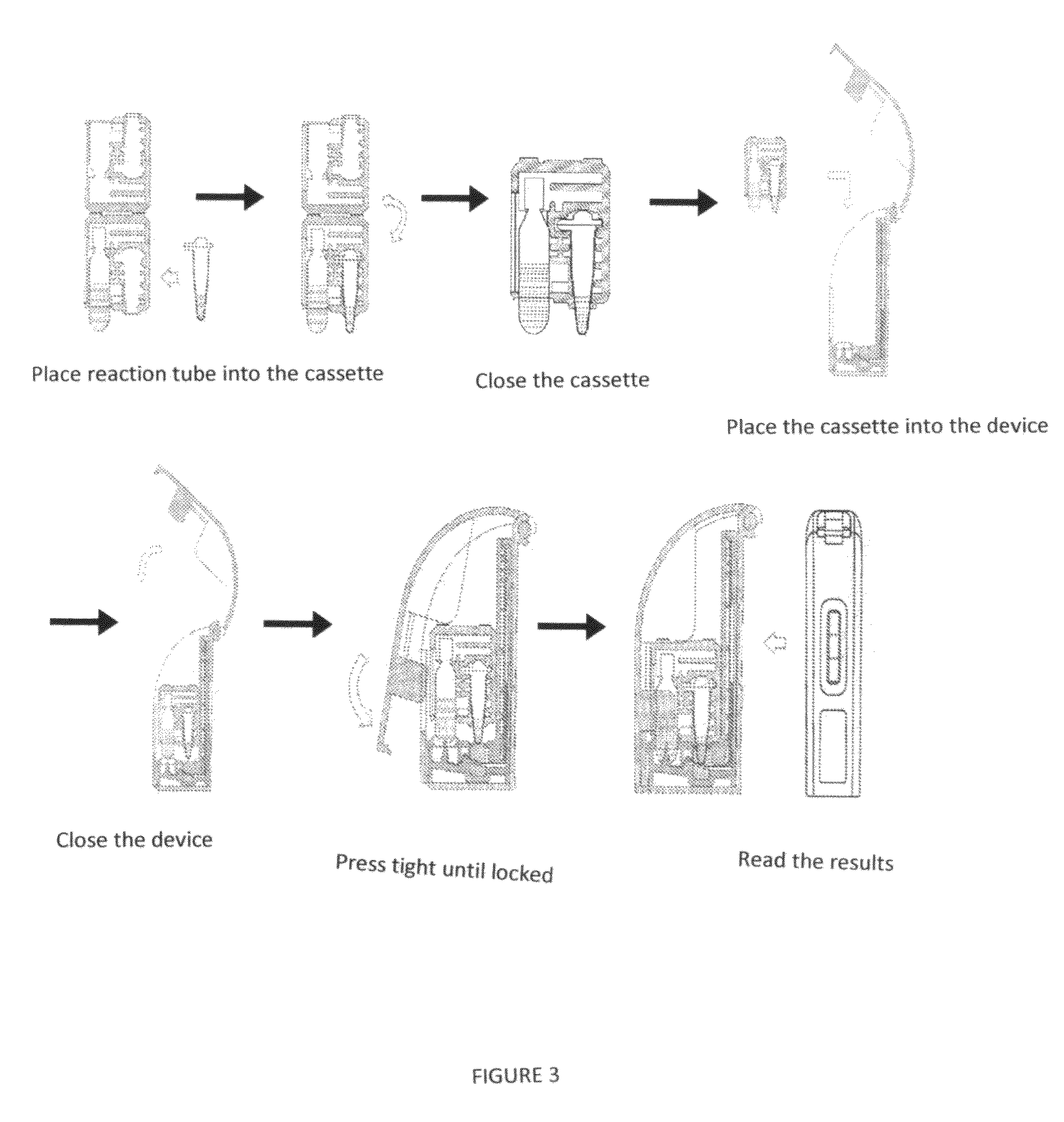Enclosed unit for rapid detection of a target nucleic acid amplification product
a nucleic acid amplification and target technology, applied in specific use bioreactors/fermenters, laboratory glassware, biomass after-treatment, etc., can solve problems such as social and legal issues, ethics, family disputes, and elimination of pcr false positives, so as to prevent cross-contamination, rapid detection of a target nucleic acid amplification product, and avoid false positives
- Summary
- Abstract
- Description
- Claims
- Application Information
AI Technical Summary
Benefits of technology
Problems solved by technology
Method used
Image
Examples
embodiments
Embodiment 1
Detecting a Product of PCR Amplification of Target Nucleic Acids in Gonococci as an Example
[0096]1. PCR Amplification:
[0097]
KCl (500 mmol)2μLTris-HCl (pH 8.3, 100 mmol)2μLMgCl2 (20 mmol)2μLdNTP (2 mmol)2μLForward Primer (Biotin-labeled, 2 μmol)2μLReverse Primer (2 μmol)2μLReverse FITC-labeled probe (2 μmol)2μLGonococci4000Taq DNA Polymerase0.5unitsTotal20μL95 DEG C.5s60 DEG C.15s72 DEG C.15s60 cycles
[0098]2. Detection[0099]placing the PCR tube containing the amplification product inside the hole for housing the PCR tube in the fixing case (wherein washing buffer vacuoles have already been provided in the hole for housing the washing buffer vacuole tube in advance);[0100]fastening the fixing case, and placing it inside the detection unit;[0101]closing the handle cover of the detection unit;[0102]pressing the cover of the detection unit until it is fastened down;[0103]determining the result after 10 minutes;[0104]recording the detection result, and discarding the enclosed ...
embodiment 2
[0106]Detecting a product of isothermal amplification (A Method for Amplifying A Target Nucleic Acid Sequence by Using Nickase and A Kit for Amplifying A Target Nucleic Acid Sequence, see another patent of the inventor, App. No. 200610003429.1) of target nucleic acids using cloned DNA in gonococci as the template.
[0107]1. Reaction Conditions:
[0108]Tube 1:
[0109]
Reactive buffer solution 10x(1000 mM NaCl, 500 mM1 μLTris-HCl, 100 mM MgCl2, 10 mM dithiothreitol, PH7.9 at 25 DEG C.)Two pairs of primers P1, 2 / S1, 2 5 μmol / 0.5 μmol2 μLUltrapure water5 μLTemplate gonococcal plasmids (1000 copies / muL)2 μLTotal10 μL
[0110]Denatured at 95 DEG C. for 10 minutes, then naturally cooled to room temperature.
[0111]Tube 2:
[0112]
Reactive buffer solution 10x(1000 mM NaCl, 500 mM1μLTris-HCl, 100 mM MgCl2, 10 mM dithiothreitol, PH7.9 at 25 DEG C.)dNTP 2 mmol / 2μLLabeled probe2μLBovine serum albumin 100 ng / μL2μLNickase N.BstNB I 10 units / μL0.5μLBst DNA polymerase 8 units / μL0.25μLUltrapure water2.25μLTotal10...
embodiment 3
Detection and Typing of Mononucleotide Polymorphism of Mitochondrial DNA G11778A Associated with Leber's Disease
[0122]Leber's hereditary optic neuropathy (LHON) is a maternally inherited binocular optic nerve disease. It was firstly reported by Wallace in 1988 that a primary point mutation (G to A) at the mitochondrial DNA (mtDNA) nucleotide site 11778 can cause LHON. So far, there has been 25 mtDAN site mutations found to be associated with this disease. Reports in recent years have shown that LHON patients with primary site mutations at 3460, 14484, etc. and LHON patients with coexisted primary and subsequent site mutations all have clinical manifestations similar to those with site mutation at 11778, and consequently, it is difficult for doctors to discriminating the patients according to their clinical manifestations. As a result, molecular biological gene detection has become the most preferred method for determining a Leber's disease caused by different factors. Regarding the ...
PUM
| Property | Measurement | Unit |
|---|---|---|
| temperature | aaaaa | aaaaa |
| temperature | aaaaa | aaaaa |
| nucleic acid thin- | aaaaa | aaaaa |
Abstract
Description
Claims
Application Information
 Login to View More
Login to View More - R&D
- Intellectual Property
- Life Sciences
- Materials
- Tech Scout
- Unparalleled Data Quality
- Higher Quality Content
- 60% Fewer Hallucinations
Browse by: Latest US Patents, China's latest patents, Technical Efficacy Thesaurus, Application Domain, Technology Topic, Popular Technical Reports.
© 2025 PatSnap. All rights reserved.Legal|Privacy policy|Modern Slavery Act Transparency Statement|Sitemap|About US| Contact US: help@patsnap.com



